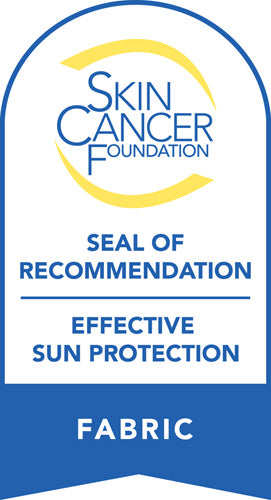SPF 30 vs. SPF 50: A Quick Comparison
An estimated 100,000 people are diagnosed with invasive melanoma annually in the United States.
Sun protection is often confusing and misleading. Some say sunscreen contains toxic chemicals, so it's better to go without it. Others say avoiding sunscreen increases the risk of melanoma.
If you decide to wear sunscreen, there's all of this confusing jargon like SPF, UPF, PA ratings, and UVA vs. UVB. In this guide, we cut through all of the noise and shine a light on the facts.
Learn all about the best sunscreen options and the difference between SPF 30 vs SPF 50 below.
What Is SPF?
SPF stands for sun protection factor. SPF is a measure of how much Ultraviolet (UV) radiation is required to produce a sunburn on the skin. The SPF is rating how much more solar energy an individual may absorb before experiencing sunburn.
For example, with an SPF of 30, you can absorb 30 times more UV radiation before experiencing sunburn and sun damage. With an SPF of 50, you can absorb 50 times more.
There is a misconception that the SPF correlates with time in the sun. But actually, it measures energy exposure.
This is because the time of day in which you are exposed to the sun impacts how much radiation is absorbed. For example, early morning hours generally have lower UV indexes. If someone were to be out at noon on a clear summer day, they would absorb more radiation in less time than if they were to spend an hour outside at 8 am.
The factors below impact your sun protection:
- Time of day
- Cloud cover
- Geographic location and distance to the equator
- Skin type
- Amount and type of sunscreen applied
- Reapplication frequency
- Composition of sunscreen
The messages around sun protection are not clear cut, and there is no one size fits all answer. However, the general rule of thumb is that a higher SPF means more sun protection if all other sun exposure variables are held the same.
SPF 30 vs SPF 50: What’s the Difference?
The SPF number estimates how long it will take your skin to burn when using the product as directed. If you normally burn in thirty minutes, wearing an SPF of 30 will instead take 900 minutes (when reapplied as directed) in the sun to cause a sunburn.
If you use an SPF 50, it will take 1500 minutes. As mentioned, there are other factors impacting the SPF, such as the time of day you're outside and your climate. Regardless, an SPF of 30 allows 3% of sunrays to hit your skin, while an SPF of 50 only allows 2%.
While this 1% difference seems insignificant, it translates to SPF 50 offering 50% more sun protection than SPF 30.
Broad-Spectrum Protection: UVA vs UVB Rays
When it comes to any sunscreen, it is vital to look for broad spectrum protection. An SPF of 30 with broad spectrum protection is better than an SPF of 50 without it.
The broad-spectrum means that the SPF protects from both of the sun's UV rays.
UVB Rays
These rays are responsible for sunburn and play a major role in the development of skin cancer. A sunscreen's SPF primarily addresses UVB protection. On the plus side, UVB rays are responsible for stimulating vitamin D production in the skin.
You only need about 10-15 minutes of sun exposure 2-3 times a week to absorb your daily value of vitamin D.
UVA Rays
These rays are responsible for skin tanning but also skin aging and wrinkles. Short UVA rays may also cause sunburn.
If a sunscreen is not broad spectrum, it usually doesn't protect against UVA rays.
Does SPF 50 Work Better Than SPF 30 for Sun Protection?
The simple answer is yes. The more complicated answer is that it depends. There are so many factors to consider when purchasing sunscreen that sometimes it's just better to stay on the safe side and cover-up.
Certain ingredients, such as coconut oil added to sunscreens, actually increase your risk of sunburn. There is also a false sense of a higher SPF, meaning it's safe to spend double the time in the sun and use half the amount of sunscreen.
A higher SPF does block more of the suns rays as demonstrated:
- SPF 15: blocks 93% of UVB rays
- SPF 30: 96.7 %
- SPF 50: 98%
Other factors contribute to the protection offered by your sunscreen. These include:
- Chemical vs. mineral composition
- Sweat/water exposure
- Application frequency
- Ingredient quality
You'll find sunscreens for as cheap as $3 and others above $200. Do your research before purchasing sunscreen and pay attention to how your skin reacts when it is worn in the sun.
What Is a PA Rating?
The PA grading system, established in Japan, is a sister system to SPF meant to inform consumers about the level of UVA protection a sunscreen provides. PA is short for Protection Grade of UVA. Remember that SPF only measures the UVB protection of sunscreen.
The ideal sunscreen has a high SPF and four PA plus signs (marked ++++). The PA ratings indicate how much more time is required for your skin to be impacted by UVA rays (which is usually indicated by skin tanning).
The PA grading system is below:
- PA+ = 2- 4 times longer to absorb UVA rays
- PA++ = 4- 8 times longer
- PA+++ = 8- 16 times longer
- PA++++ = 16 times longer
Other Ways to Protect Against Sun Damage
Sunscreen is very important for exposed areas of your body. However, you can't fully control the impact and protection of your sunscreen. There are two ways you can fully take charge of your sun exposure.
UPF 50+ Clothing
UPF stands for Ultraviolet Protection Factor, and it indicates how much broad-spectrum radiation reaches your body. A garment with a UPF 50+ rating only allows 1/50th of rays to penetrate, which means it blocks 98% of UVB and UVA radiation.
Wearing UPF 50+ clothing, hats, and swimsuits are the easiest ways to protect yourself and your family. You are guaranteed broad-spectrum protection. You also don't have to fuss with sticky, messy sunscreens and worry about SPF 30 vs SPF 50.
It's important to only shop from authorized UPF brands and retailers. They must have a Skin Cancer Foundation certification to sell guaranteed UPF 50+ fabric.
Timing Is Everything
Another way to protect yourself is to check the UV index and download a sun tracking application like dMinder. dMinder tells you the safest times to go outside based on your zip code.
They'll also tell you when vitamin D is available in your area.
Take Skin Protection Seriously With SPF
If choosing SPF 30 vs SPF 50, look for an SPF 50 sunscreen with broad-spectrum protection and if possible, a four + PA rating. Also, look for a sunscreen you feel comfortable in, so you will enjoy wearing it and thus use it consistently.
The best strategy to protect yourself from skin cancer and aging UV radiation is to use a combination of sun protection methods. Wear UPF 50+ clothing, put sunscreen on any exposed areas, use sun-protecting accessories, and avoid going outside in the middle of the day!
Read our skin cancer prevention steps to keep you and your family safe in the sun!



